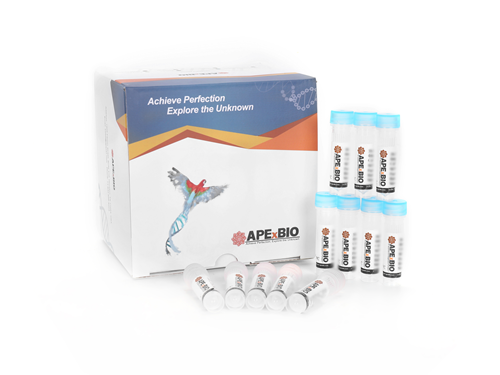γH2AX DNA Damage Detection Kit (Mouse mAb/Red)
DNA damage refers to the disruption or alteration of the DNA molecule structure, which can be caused by various factors, including ultraviolet radiation, ionizing radiation, genotoxic chemicals, and chemotherapeutic drugs. DNA damage takes many forms, including base modifications, intrastrand and interstrand crosslinks, DNA single-strand breaks, and DNA double-strand breaks (DSBs). Among these, DSBs are considered the most severe form of DNA damage, potentially leading to genomic instability, triggering tumors, and other related diseases.
γ-H2AX is a biomarker that rapidly appears after DNA double-strand breaks. It is one of the variants of histone H2A. When DNA double-strand breaks occur, certain kinases such as ATM and ATR phosphorylate serine at the 139th position of H2AX, forming phosphorylated H2AX, i.e., γ-H2AX. The level of γ-H2AX can reflect the degree of DNA damage and repair, making it an important marker for studying DNA damage and apoptosis.
This kit uses the γ-H2AX immunofluorescence method to detect DNA damage. During detection, the cell nucleus is stained blue with DAPI, while the DNA damage area, due to the presence of γ-H2AX, exhibits red fluorescence, thereby visually displaying the location and extent of DNA damage. The γ-H2AX Mouse mAb provided in this kit can recognize γ-H2AX in humans, mice, and rats, allowing this kit to detect DNA damage in human, mouse, or rat cells or tissues through fluorescence microscopy or high-content screening.

Figure 1: Treat Hela cells with 50 μL of Camptothecin (Cat. No. A2877) for 1.5 h and then detected with this kit
|
Components |
1 Kit |
Storage |
|
Fixation Solution |
50 mL |
-20°C |
|
Wash Buffer |
500 mL |
4°C |
|
Blocking Buffer |
50 mL |
4°C |
|
γ-H2AX Mouse mAb |
5 mL |
4°C |
|
Anti-Mouse Cy5 |
5 mL |
4°C away from light |
|
DAPI |
50 mL |
-20°C away from light |
|
Mounting Medium |
10 mL |
4°C |
|
Shipping: Blue ice Shelf life: 6 months |
||








